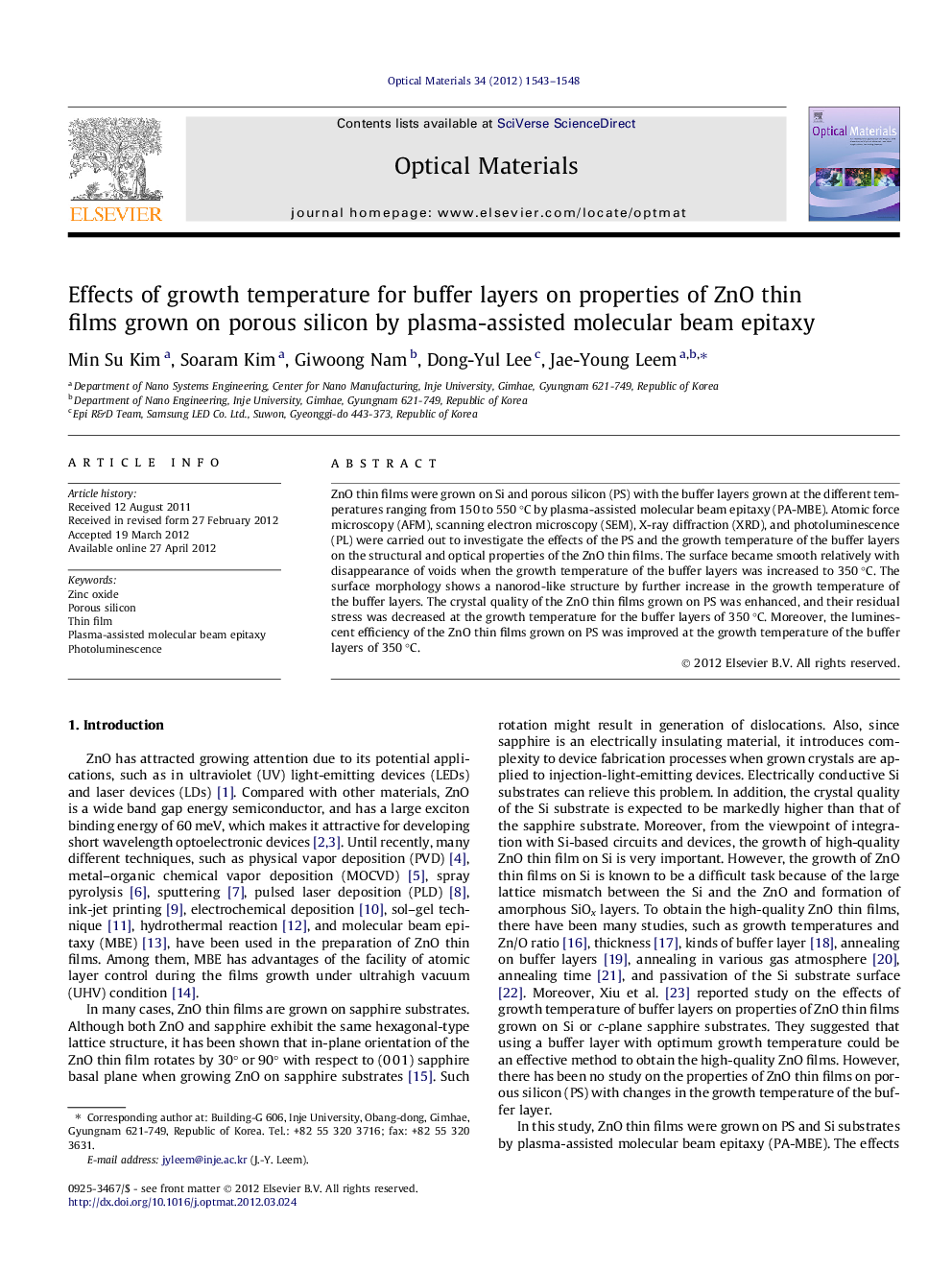| Article ID | Journal | Published Year | Pages | File Type |
|---|---|---|---|---|
| 1495697 | Optical Materials | 2012 | 6 Pages |
ZnO thin films were grown on Si and porous silicon (PS) with the buffer layers grown at the different temperatures ranging from 150 to 550 °C by plasma-assisted molecular beam epitaxy (PA-MBE). Atomic force microscopy (AFM), scanning electron microscopy (SEM), X-ray diffraction (XRD), and photoluminescence (PL) were carried out to investigate the effects of the PS and the growth temperature of the buffer layers on the structural and optical properties of the ZnO thin films. The surface became smooth relatively with disappearance of voids when the growth temperature of the buffer layers was increased to 350 °C. The surface morphology shows a nanorod-like structure by further increase in the growth temperature of the buffer layers. The crystal quality of the ZnO thin films grown on PS was enhanced, and their residual stress was decreased at the growth temperature for the buffer layers of 350 °C. Moreover, the luminescent efficiency of the ZnO thin films grown on PS was improved at the growth temperature of the buffer layers of 350 °C.
► ZnO films were grown on porous silicon with buffer layers by molecular beam epitaxy. ► The buffer layers were grown at different temperatures. ► The crystallinity of the ZnO films enhanced when buffer layers were grown at 350 °C. ► The luminescent efficiency of the ZnO films also improved at 350 °C.
